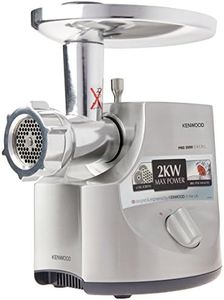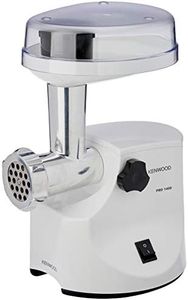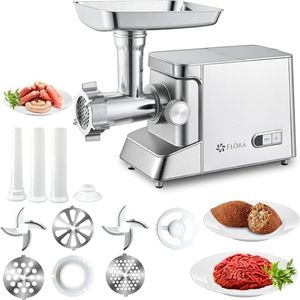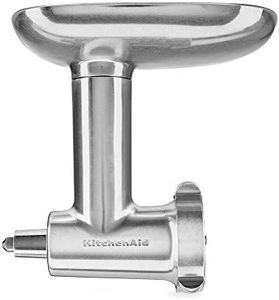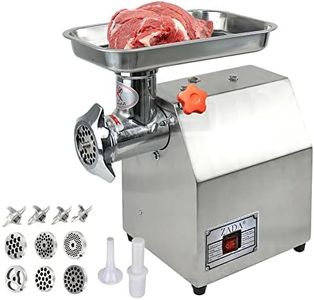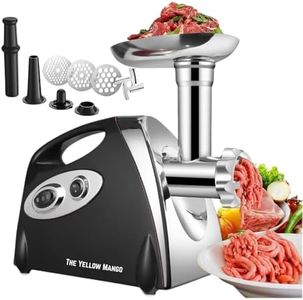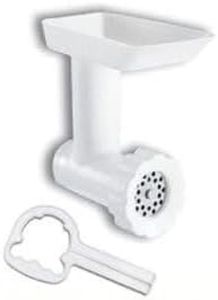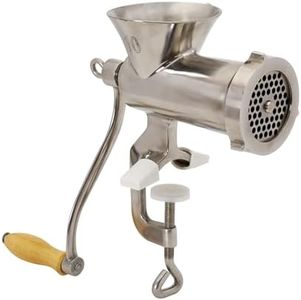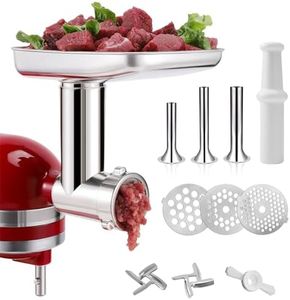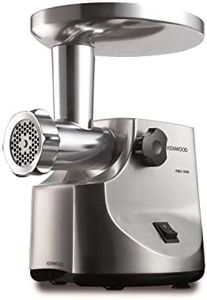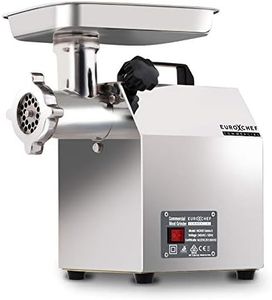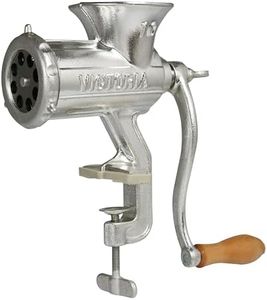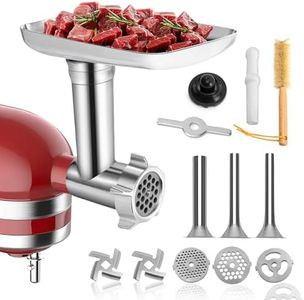We Use CookiesWe use cookies to enhance the security, performance,
functionality and for analytical and promotional activities. By continuing to browse this site you
are agreeing to our privacy policy
10 Best Meat Grinders
From leading brands and best sellers available on the web.Buying Guide for the Best Meat Grinders
Choosing a meat grinder can be a great way to control the quality and freshness of ground meats for your meals. The right meat grinder will make food preparation faster, easier, and safer. To make the best choice, think about how much you plan to use it, what kinds of meats you'll be grinding, and if you'll use it for other purposes like making sausages or grinding vegetables. Being clear about your needs helps you select a grinder that matches your kitchen habits and expectations.Power (Motor Wattage or Manual Operation)The power of a meat grinder, measured in watts for electric models or via manual operation for hand-cranked models, determines how quickly and efficiently the machine can process meat. Higher wattage means the grinder can handle tougher cuts and larger batches without overheating. Lower power is fine if you only grind small amounts occasionally or use softer meats. If you want speed and less physical effort, choose a higher-powered electric model. For occasional or small household use, a manual grinder could suffice, but it's less convenient for large volumes.
Grinding Capacity (Meat Output Per Minute)Grinding capacity tells you how much meat the grinder can process in a set time, usually per minute. Smaller grinders may handle under 1 pound per minute, medium ones do 1 to 2 pounds, and heavy-duty options can exceed 3 pounds per minute. If you roast, barbecue, or make sausages in large batches, look for a higher capacity. For occasional meals or small families, a lower-capacity model is usually more than enough.
Construction MaterialMeat grinders are often made of plastic, stainless steel, or aluminum. Stainless steel and heavy metals are more durable, easier to clean, and generally safer for long-term food contact. Plastic grinders are lighter and more affordable but may not last as long and can't handle tough jobs. If you want longevity, ease of hygiene, and heavy use, look for stainless steel. For light or infrequent tasks, plastic may suffice.
Cutting Plates and BladesCutting plates come with different hole sizes, letting you choose between fine, medium, or coarse ground meat. Finer plates are used for mixes like sausages or pâtés, while coarser plates work well for burgers or chili. Look for models that provide multiple plate sizes for flexibility. If you only prepare one style of food, a single plate may be ample, but for variety, more plate options can be helpful.
Ease of CleaningCleaning a meat grinder thoroughly is essential for food safety. Some grinders have dishwasher-safe parts, while others must be washed by hand. Models that are easy to disassemble make the cleaning process much simpler. If you value convenience and plan to use the grinder often, focus on ease of cleaning to reduce post-cooking hassle and maintain hygiene.
Attachments and AccessoriesSome grinders come with extra accessories like sausage stuffing tubes, kibbe makers, or vegetable slicers. If you're interested in making sausages, stuffing, or expanding your grinder's utility, look for models that include these features. If your primary purpose is simply to grind meat, you may not need extra attachments, but considering them can add value if your needs grow.
Size and StorageMeat grinders can range from compact units that fit in a small cupboard to larger, heavier models that take up more space. If your kitchen has limited storage or counter space, consider compact and lightweight designs. If you'll leave it on the countertop or use it regularly for large batches, a bigger, sturdier grinder may be right for you.
